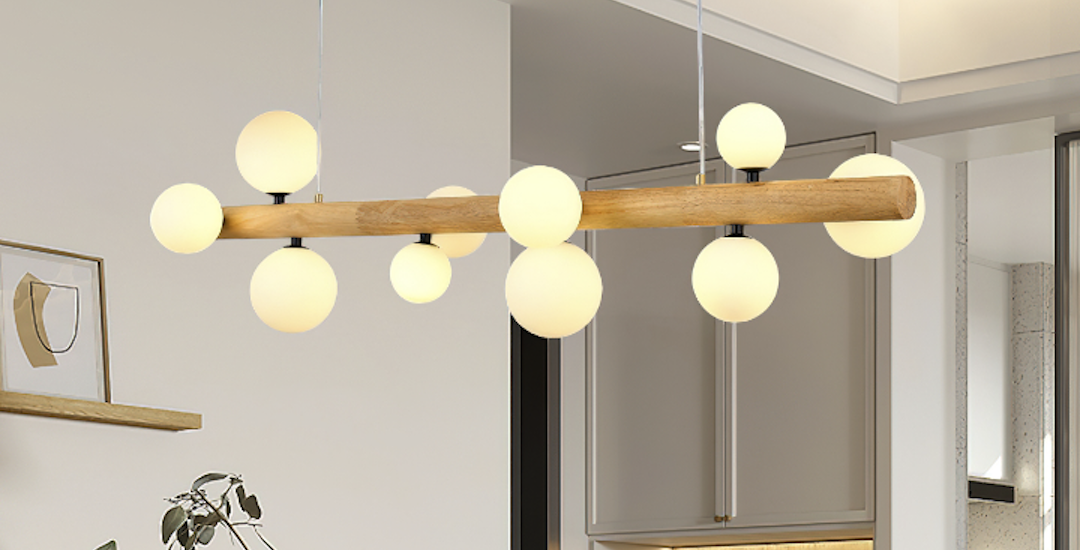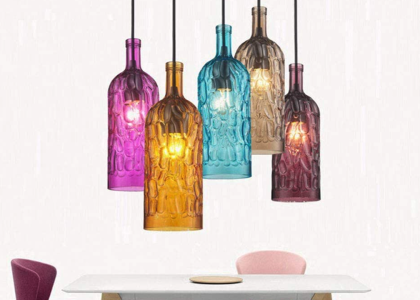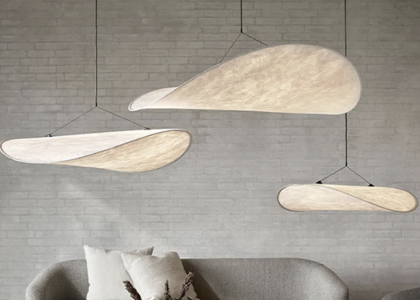Selecting the appropriate size and style of a chandelier is crucial for achieving a harmonious balance within a room. The dimensions of the chandelier should be proportionate to the space it occupies. A common guideline is to add the length and width of the room in feet, and then convert that total into inches to determine the ideal diameter of the chandelier.
For instance, in a dining room measuring 12 feet by 15 feet, the total is 27, suggesting a chandelier with a diameter of approximately 27 inches. However, this is merely a starting point; factors such as ceiling height and the overall design aesthetic of the room must also be considered. Style plays an equally significant role in the selection process.
Chandeliers come in a myriad of designs, from traditional crystal pieces that evoke elegance to modern minimalist fixtures that emphasize clean lines and simplicity. The chosen style should complement the existing decor while also reflecting personal taste. For example, a rustic farmhouse might benefit from a wrought iron chandelier adorned with Edison bulbs, while a contemporary loft could be enhanced by a sleek, geometric fixture.
Ultimately, the right size and style will not only illuminate the space but also serve as a defining element of the room’s character.
Creating a Focal Point in the Room
Creating an Inviting Atmosphere
In dining areas, hanging a chandelier directly above the table creates an inviting atmosphere while providing functional lighting for meals. This placement not only illuminates the space but also sets the tone for social gatherings and family dinners.
Establishing a Visual Anchor
In living rooms, placing a chandelier in the center of the ceiling can help establish a visual anchor that ties together various elements of the decor. This central placement creates a sense of balance and harmony, drawing the eye upward and creating a sense of grandeur.
Designing for Impact
The design of the chandelier itself can also enhance its role as a focal point. A bold, oversized piece can command attention and become a conversation starter, while a more understated design can still create interest through unique materials or intricate details. For example, a large, multi-tiered crystal chandelier can evoke opulence and grandeur, making it ideal for formal settings. Conversely, a minimalist pendant light with an artistic flair can serve as an eye-catching centerpiece in a more casual environment.
Incorporating Dimmer Switches for Versatility
The versatility of lighting is often enhanced by incorporating dimmer switches into the design scheme. Dimmer switches allow for adjustable brightness levels, enabling homeowners to create different moods and atmospheres depending on the occasion. For instance, during a lively dinner party, brighter lighting can facilitate conversation and activity, while softer lighting can create an intimate ambiance for quieter evenings at home.
Installing dimmer switches is relatively straightforward and can be done by a qualified electrician or even as a DIY project for those with basic electrical knowledge. It is important to select dimmer switches that are compatible with the type of bulbs used in the chandelier, whether they are incandescent, LED, or halogen. Additionally, using dimmable LED bulbs can significantly reduce energy consumption while still providing flexibility in lighting options.
By integrating dimmer switches into their lighting design, homeowners can enjoy both functionality and aesthetic appeal.
Embracing Different Shapes and Designs
Chandeliers are available in an array of shapes and designs that can dramatically influence the overall aesthetic of a room. Traditional chandeliers often feature ornate designs with multiple arms and intricate detailing, typically made from materials like crystal or glass. These classic pieces can add an air of sophistication to formal dining rooms or grand entryways.
However, contemporary designs have expanded the possibilities significantly, introducing innovative shapes such as geometric forms or organic silhouettes that cater to modern tastes. For example, a round chandelier with cascading glass droplets can evoke a sense of fluidity and movement, making it suitable for spaces that prioritize creativity and artistic expression. Alternatively, an angular metal fixture with exposed bulbs may appeal to those who favor industrial or minimalist styles.
The choice of shape not only affects visual impact but also influences how light is distributed throughout the room. A wide chandelier may cast light more broadly, while a more compact design may focus illumination in specific areas. Embracing diverse shapes and designs allows homeowners to tailor their lighting choices to their unique preferences and spatial requirements.
Considering the Height of the Chandelier
The height at which a chandelier is hung is another critical factor that influences both functionality and aesthetics. A general rule of thumb is to hang chandeliers approximately 30 to 36 inches above dining tables to ensure adequate clearance for diners while still providing effective illumination. In spaces with higher ceilings, such as grand foyers or vaulted living rooms, chandeliers may be hung higher to maintain proportion and visual balance.
In addition to dining areas, chandeliers can also be used effectively in other spaces such as bedrooms or hallways. In bedrooms, hanging a chandelier above the bed can create a romantic atmosphere; however, it should be positioned at least 7 feet above the floor to avoid obstruction. In hallways or entryways, chandeliers should be hung at a height that allows for easy passage without feeling cramped or overwhelming.
By carefully considering the height of the chandelier in relation to its surroundings, homeowners can enhance both safety and style.
Mixing and Matching with Other Lighting Fixtures
Combining Fixtures for a Dynamic Space
Chandeliers can be effectively mixed and matched with other types of lighting such as wall sconces, pendant lights, or recessed lighting to achieve a layered lighting effect. For instance, in an open-concept living area that includes both dining and lounge spaces, a statement chandelier can serve as the primary light source over the dining table while complementary pendant lights provide focused illumination over seating areas.
Adding Ambiance with Wall Sconces
Wall sconces can further enhance ambiance by adding soft light along walls or highlighting artwork. When mixing fixtures, it is essential to maintain a cohesive design theme; this can be achieved through consistent materials or color palettes that tie different elements together.
Creating Dynamic Environments
By thoughtfully combining various lighting sources, homeowners can create dynamic environments that cater to different activities and moods. This approach allows for a more flexible and functional space that can adapt to changing needs and preferences.
Showcasing the Chandelier in Open Spaces
In open-concept homes where spaces flow seamlessly into one another, chandeliers can play an integral role in defining different areas while maintaining an overall sense of cohesion. A well-placed chandelier Yellopen can delineate spaces such as dining areas from living rooms without the need for physical barriers like walls or partitions. This approach not only enhances functionality but also fosters an inviting atmosphere conducive to social interaction.
To effectively showcase a chandelier in an open space, consider its scale and design in relation to surrounding elements. A large chandelier may serve as a dramatic centerpiece that draws attention from various vantage points within the space. Conversely, smaller fixtures may be used strategically throughout different areas to create visual continuity without overwhelming the overall aesthetic.
Additionally, using similar materials or finishes across various lighting elements can help unify disparate areas within an open layout. By thoughtfully positioning chandeliers within open spaces, homeowners can enhance both functionality and visual appeal.
Maintaining and Cleaning Your Chandelier
Proper maintenance and cleaning are essential for preserving the beauty and functionality of chandeliers over time. Dust accumulation can dull the shine of crystals or glass components, diminishing their brilliance and overall impact on the room’s decor. Regular cleaning should be part of any homeowner’s routine; this typically involves gently dusting with a soft cloth or feather duster on a monthly basis.
For deeper cleaning, especially for intricate designs with multiple facets or hard-to-reach areas, it may be necessary to disassemble certain parts of the chandelier carefully. Using warm water mixed with mild soap is often effective for cleaning glass or crystal components; however, it is crucial to avoid harsh chemicals that could damage finishes or materials. After cleaning, ensure all components are thoroughly dried before reassembling to prevent moisture buildup that could lead to corrosion or electrical issues.
By committing to regular maintenance practices, homeowners can ensure their chandeliers remain stunning focal points for years to come.




